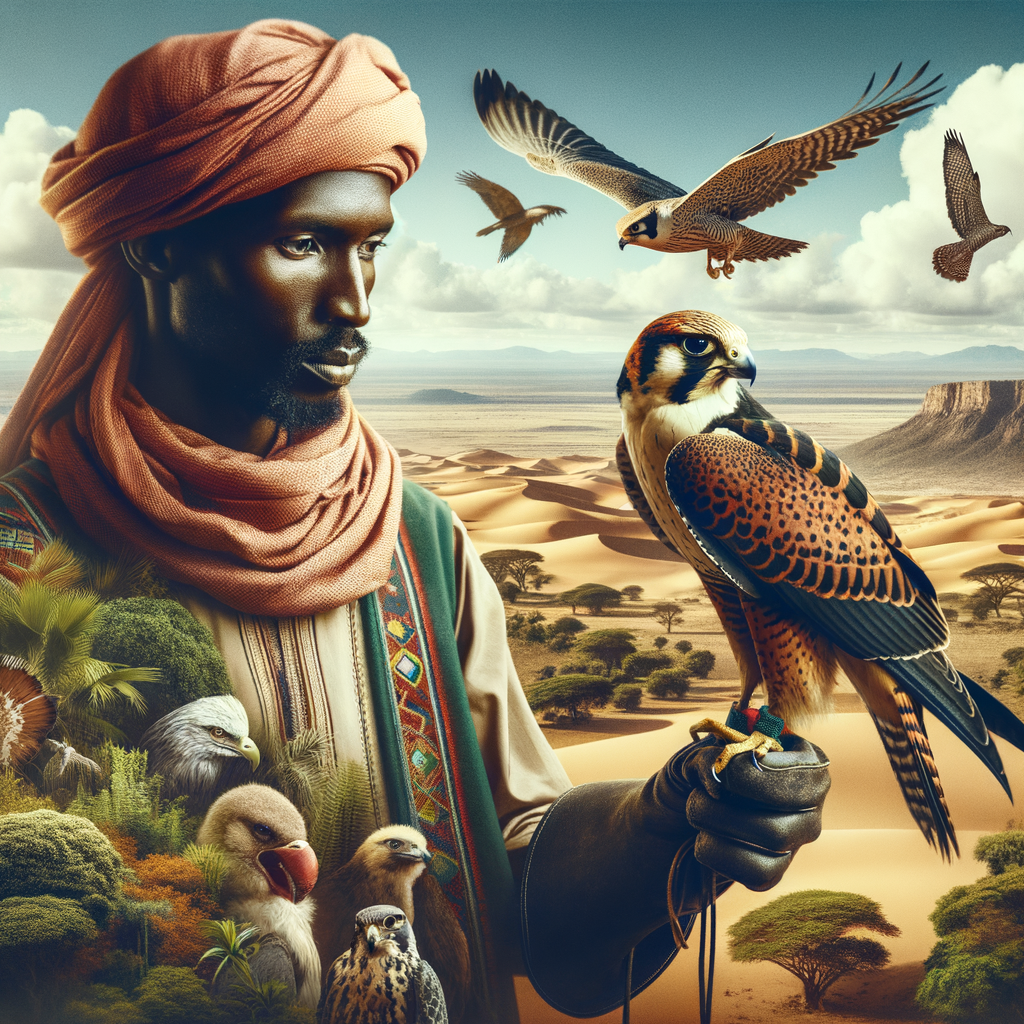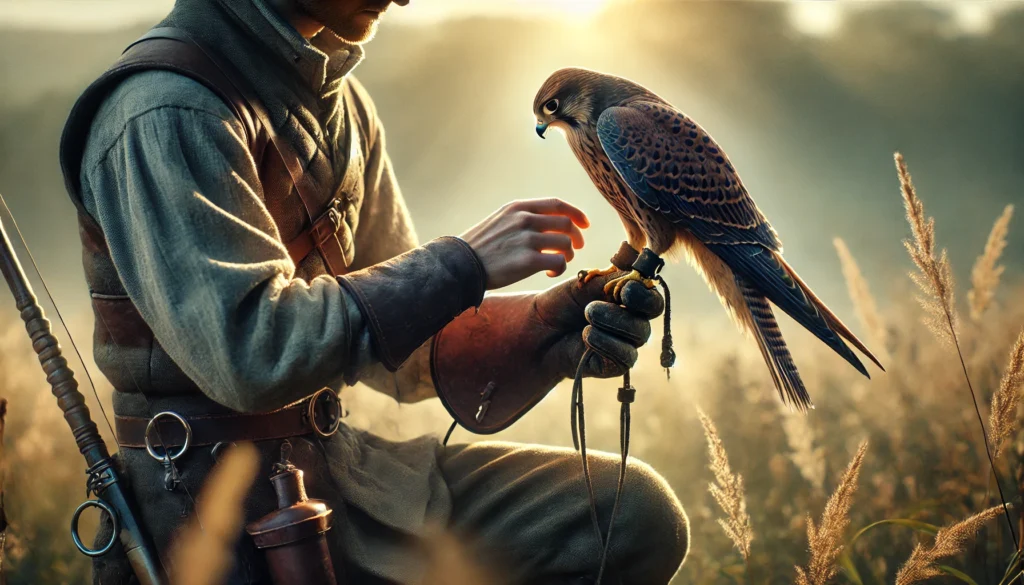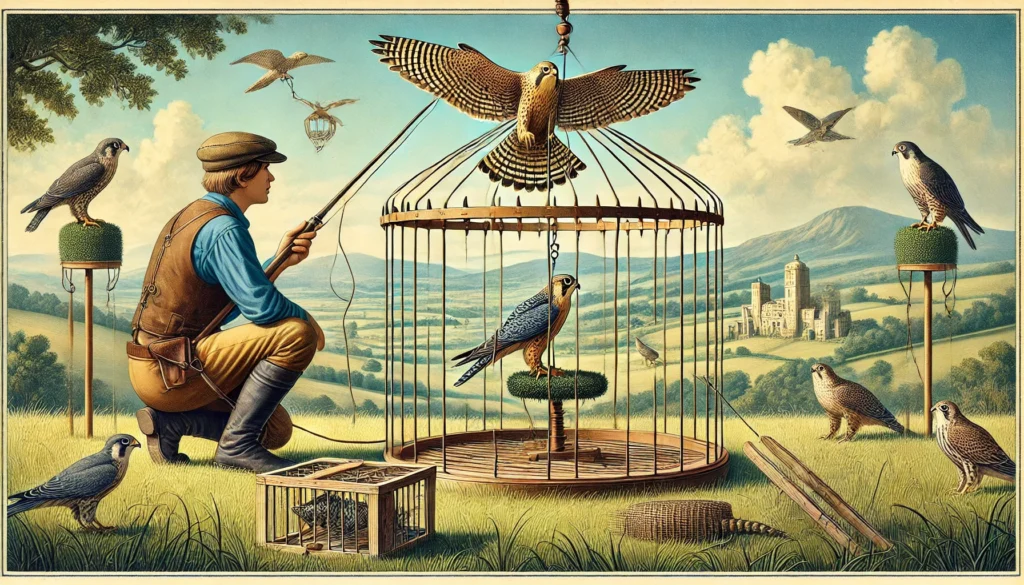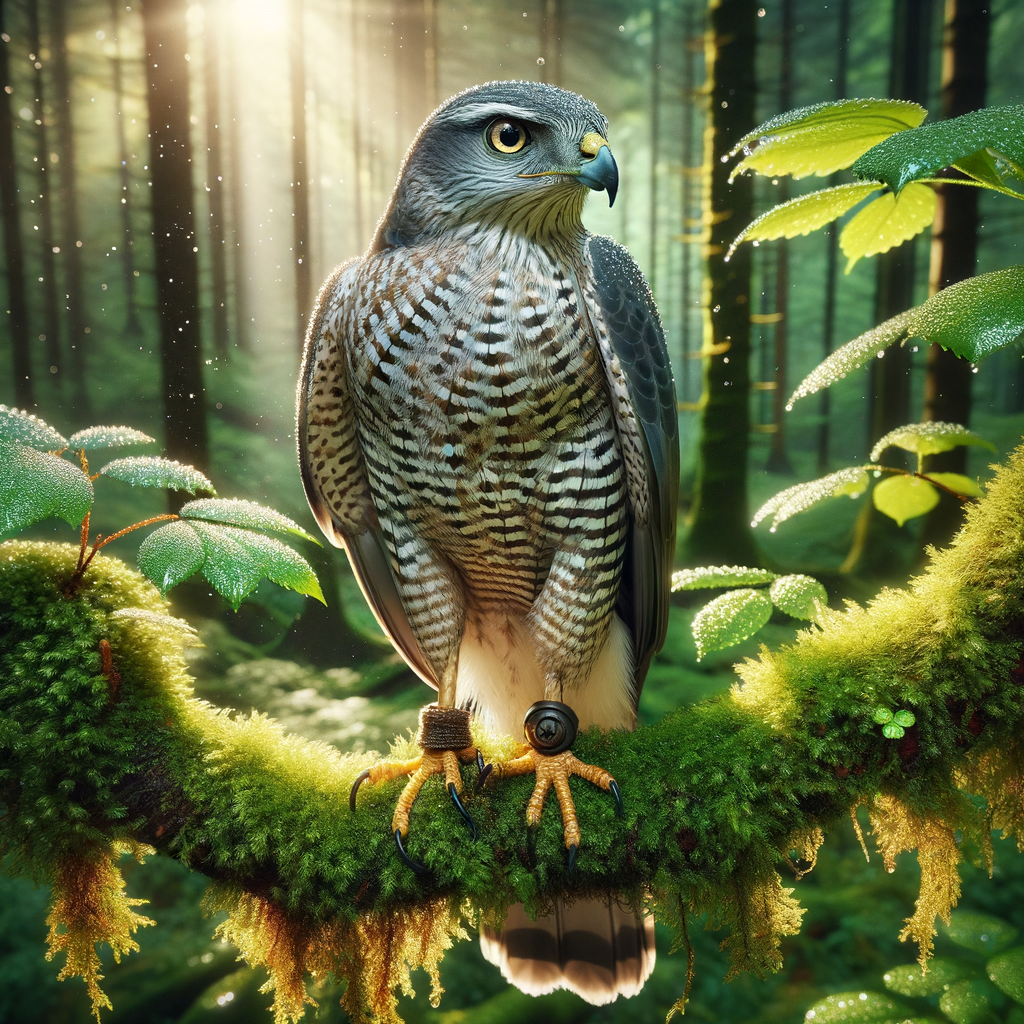Falconry in African Cultures
- Ancient Tradition: Falconry has a long history in African cultures, dating back thousands of years.
- Cultural Significance: Birds of prey are highly respected and symbolize power, grace, and hunting prowess.
- Hunting Skills: Falcons and other birds are trained to assist in hunting, showcasing remarkable teamwork between humans and birds.
- Art and Stories: Many African artworks and folklore feature falcons and other birds of prey, celebrating their importance.
- Conservation Efforts: Falconry also helps raise awareness about bird conservation and the need to protect natural habitats.
- Educational Value: Learning falconry can teach valuable skills like patience, dedication, and a deep appreciation for nature.
- Community Bonding: Falconry events and festivals bring communities together, celebrating a shared heritage and love for these magnificent birds.
Discovering the Rich Tapestry of Falconry in African Cultures
Imagine falconry as a traditional Irish ceilidh, where communities come together to celebrate music, dance, and stories that have been passed down through generations. Just as the ceilidh preserves and shares the rich cultural heritage of Ireland, falconry serves as a vibrant thread woven into the fabric of African cultures, each with its unique stories and traditions.
As you journey through this article, you’ll uncover fascinating tales of how different African communities have embraced falconry. From the deserts to the savannahs, each region features unique techniques and cultural significances that spotlight the incredible diversity and depth of this age-old practice. Like the keen-eyed falcon that soars high and hunts with precision, you’ll gain a sharper insight into the profound relationship between humans and these majestic birds.
So, grab your metaphorical binoculars, and let’s dive into the intricate world of African falconry. Trust us’this adventure will elevate your appreciation for this timeless tradition and the cultures that keep it alive.
African Falconry: A Journey Through Historical and Cultural Traditions
Welcome to the fascinating world of African falconry! This ancient practice has deep roots in various cultures across the African continent, showcasing a rich tapestry of history, tradition, and skill. Let’s embark on a journey to explore the captivating tradition of falconry in Africa and uncover how it has evolved and thrived over centuries.
The Origins of Falconry in Africa
Falconry, the art of hunting with birds of prey, has been a significant part of African history for thousands of years. African falconry traditions can be traced back to ancient Egypt, where falcons were revered as symbols of royalty and protection. Learn more about the ancient origins of falconry. Hieroglyphs and artifacts from this era depict scenes of falcons being used for hunting and ceremonial purposes, emphasizing their importance in the culture.
Falconry in Sub-Saharan Africa
In sub-Saharan Africa, falconry practices have been influenced by a blend of indigenous customs and techniques brought in from other regions. Tribes in parts of Africa, such as the Fulani people, have historically used falcons for hunting small game. These traditions have been passed down through generations, maintaining the cultural significance of falconry within these communities. Discover more about falconry in sub-Saharan Africa.
African Falconry Traditions
The techniques and equipment used in African falconry vary widely depending on the region and the species of falcons involved. African falconry traditions often emphasize a strong bond between the falconer and their bird, where mutual respect and trust are paramount. Traditional training methods are still practiced today, showcasing the continuity and perseverance of these age-old customs. To learn more about falconry techniques, visit our falconry techniques page.
Species of Falcons in African Falconry
Several species of falcons are native to Africa, each contributing uniquely to falconry practices. The African pygmy falcon, for example, is a small but skilled hunter used by some African falconers. The Lanner falcon, another prominent species, is known for its speed and agility. These birds are integral to the success of falconry in Africa. Explore different species of falcons to understand their roles in African falconry.
Modern-Day Falconry in Africa
While traditional methods hold strong, modern advancements in falconry have also found their way into African practices. Today’s falconers might use GPS trackers and other technology to ensure the safety and effectiveness of their hunting expeditions. This blend of old and new techniques highlights the adaptability and resilience of African falconry. If you’re curious about modern falconry techniques, check out our modern falconry applications.
By exploring the rich history and current practices of falconry in Africa, we can appreciate how this incredible tradition has flourished over centuries. Whether preserving ancient customs or adapting to modern technological advancements, African falconry remains a testament to the enduring bond between humans and birds of prey. For more information on the history of falconry, visit our detailed history section.
African Falconry Traditions in 2024
Historical Background
Falconry has a rich history in Africa, dating back to the time of the pyramids. Bedouin tribes traditionally practiced falconry for hunting small game like hares and birds. This practice was not only about hunting but also a symbol of skill, patience, and a deep connection with nature. Falcons were seen as symbols of nobility, strength, and freedom. Here’s a table showcasing key historical milestones:
| Year | Event |
|---|---|
| Ancient Times | Bedouin tribes began falconry |
| Medieval Era | Spread across North Africa regions |
| 1940s | First recorded falconers in Africa |
Falconry Practices
Falconers in Africa use birds to hunt prey in their natural state, emphasizing the welfare of the birds and sustainable wildlife usage. Below is a table with popular falconry bird species in Africa:
| Bird Species | Region | Special Notes |
|---|---|---|
| Lanner Falcon | Southern Africa | Often found in Kruger National Park |
| Amur Falcon | Sub-Saharan Africa | Migratory, found in large flocks |
| Red-footed Falcon | Sub-Saharan Africa | Prefers drier habitats |
Conservation Efforts
Falconers are deeply involved in conservation efforts, including habitat preservation and protection of wild raptor populations. Organizations like the International Association for Falconry (IAF) encourage sustainable wildlife use. Here’s a brief look at falcon conservation status:
| Species | Status | Threats |
|---|---|---|
| Peregrine Falcon | Stable | Habitat loss, pollution, hunting |
| Bateleur Falcon | Endangered | Habitat transformation, poisoning |
Migration Patterns
Migration patterns of African falcon species are quite fascinating. For instance, Eleonora’s Falcons migrate to a narrow wintering area in Madagascar. The table below includes migratory patterns:
| Species | Pattern |
|---|---|
| Eleonora’s Falcon | Adults and juveniles winter in Madagascar |
Falconry Festivals and Modern Practices
Despite stricter regulations, falconry remains an important cultural tradition in Africa. Various festivals and competitions are held where enthusiasts gather to show their birds’ skills, exchange knowledge, and participate in flying demonstrations.
Regional Populations and Regulations
In North Africa, the Peregrine Falcon population is estimated to be 2,290-2,900 pairs. The practice is regulated with a self-regulating system and negotiated quotas for wild raptor harvests, ensuring minimal consumptive use and promoting conservation.
Community Engagement
Falconry is often passed through generations within families or training clubs. It is shared through mentoring and community events, ensuring its preservation and growth in the community.
Falconry Population Data in North Africa
| Region | Estimated Population |
|---|---|
| North Africa | 2,290-2,900 pairs |
Migration Data for Eleonora’s Falcon
| Age Group | Wintering Area |
|---|---|
| Adults | Madagascar |
| Juveniles | Madagascar, over the summer |
These tables and information illustrate the deep cultural roots and modern practices of African falconry, showing a clear link between the past and current conservation efforts.
The Legacy and Future of Falconry in Africa
African falconry is a vibrant tradition intertwined with the continent’s rich cultural heritage. Historically, it dates back to ancient times and was practiced by Bedouin tribes for hunting. This age-old practice symbolizes values like patience, skill, and a deep connection with nature. Today, even though its hunting aspect has lessened, falconry continues to thrive through festivals and competitions, celebrating the unique bond between humans and birds of prey.
Modern falconers in Africa are deeply committed to conservation, working tirelessly to protect wild raptor populations and habitats. The Lanner Falcon and the Amur Falcon are popular among falconers, appreciated for their adaptability and beauty. Falconry is now seen as a sustainable activity, promoting the preservation of raptors rather than their exploitation.
Internationally, African falconry holds significant recognition and is protected as a part of humanity’s intangible cultural heritage by UNESCO. This emphasizes the importance of preserving these traditions and passing them to future generations. Through community engagement and self-regulation, falconry in Africa continues to grow sustainably, ensuring that this ancient practice remains a living, flourishing art form.



